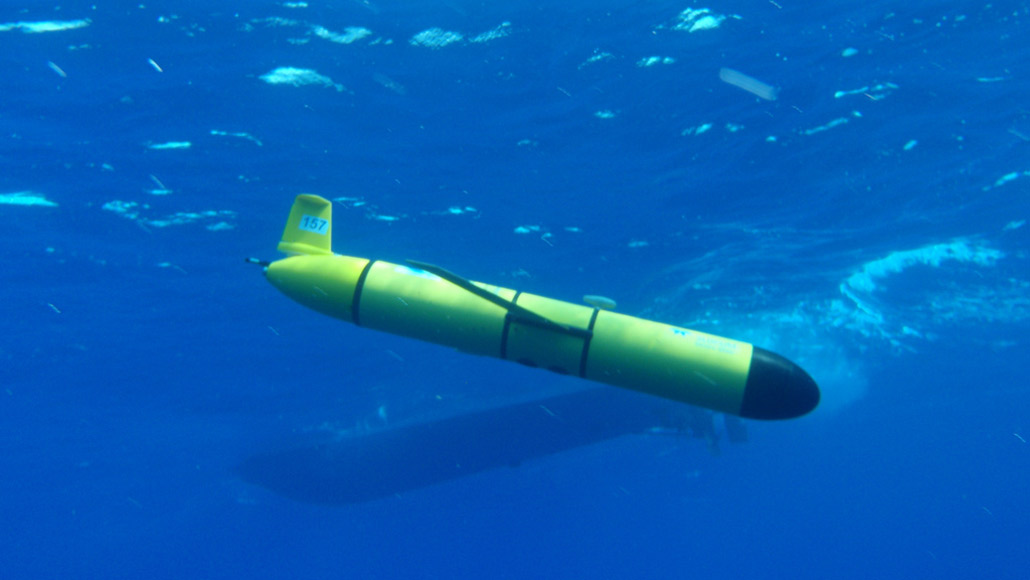
An ocean glider equipped with a microphone recorded ocean noises during an 18-day journey off the U.S. West Coast in 2012.
Oregon State University

An ocean glider equipped with a microphone recorded ocean noises during an 18-day journey off the U.S. West Coast in 2012.
Oregon State University